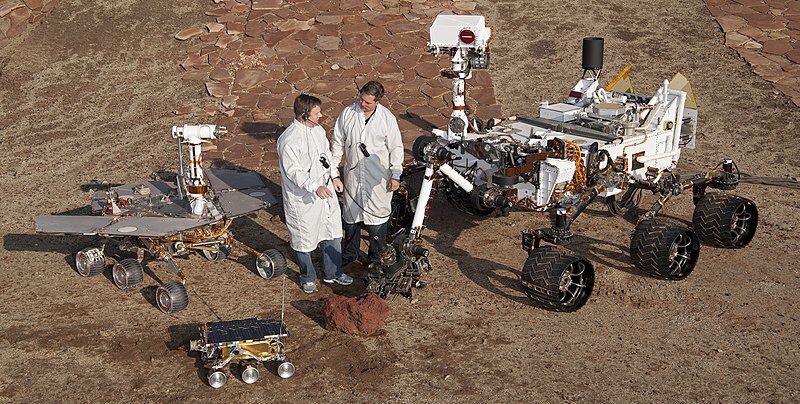Planetary exploration is the study of planets and moons beyond Earth. It is a challenging endeavor, but it has the potential to reveal new and exciting insights into the universe and our place within it. Rovers play a vital role in planetary exploration, as they are able to explore the surfaces of planets and moons in detail and collect data that would be impossible to obtain from orbit.
One of the most successful planetary exploration programs to date has been NASA’s Mars Exploration Program. Rovers have played a key role in this program, and they have helped us to learn a great deal about the Red Planet. Some of the most notable Mars rover missions include:
- Sojourner (1997): Sojourner was the first rover to land on Mars. It spent three months exploring the Martian surface and collecting data on the environment and geology.
- Spirit and Opportunity (2004):Spirit and Opportunity were twin rovers that landed on Mars in 2004. They both exceeded their mission objectives and operated for several years, exploring different regions of the Martian surface.
- Curiosity (2012): Curiosity is the largest and most sophisticated rover ever sent to Mars. It is still in operation today, and it has made significant discoveries about the Martian environment, geology, and potential for life.
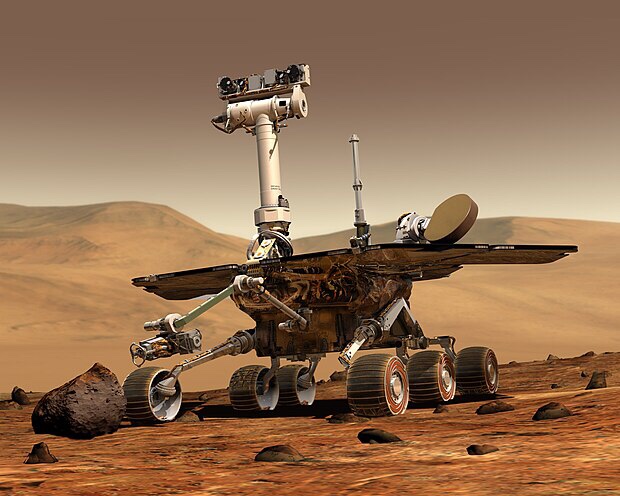
Rovers have also been used to explore the Moon. The most notable lunar rover mission was the Apollo Lunar Roving Vehicle (LRV). The LRV was used by astronauts on the Apollo 15, 16, and 17 missions to explore the lunar surface and collect samples.
Rovers for planetary exploration are critical tools for understanding our location in the universe. They have taught us a lot about the Moon and Mars, and they will continue to play an important role in our future exploration of other planets and moons.
Historical Perspective
Early missions and the first lunar rover
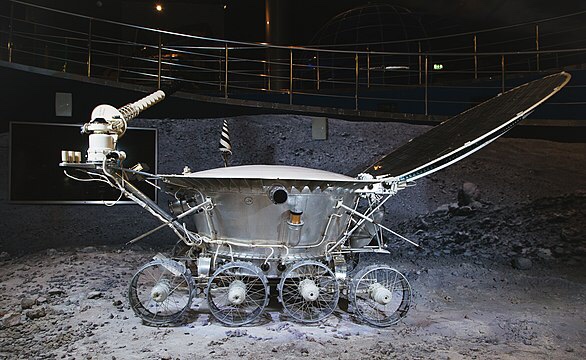
The first planetary exploration rover was the Lunokhod 1, which was launched by the Soviet Union in 1970. Lunokhod 1 landed on the Moon in November 1970 and spent 10 months exploring the lunar surface. It was the first rover to freely move across the surface of an astronomical object beyond Earth.
In 1971, the United States launched the Apollo 15 mission, which carried the first lunar rover to the Moon. The Apollo Lunar Roving Vehicle (LRV) was used by astronauts Dave Scott and Jim Irwin to explore the lunar surface and collect samples. The LRV allowed the astronauts to travel much further from their landing site than would have been possible on foot.
Evolution of Martian rovers from Sojourner to Perseverance
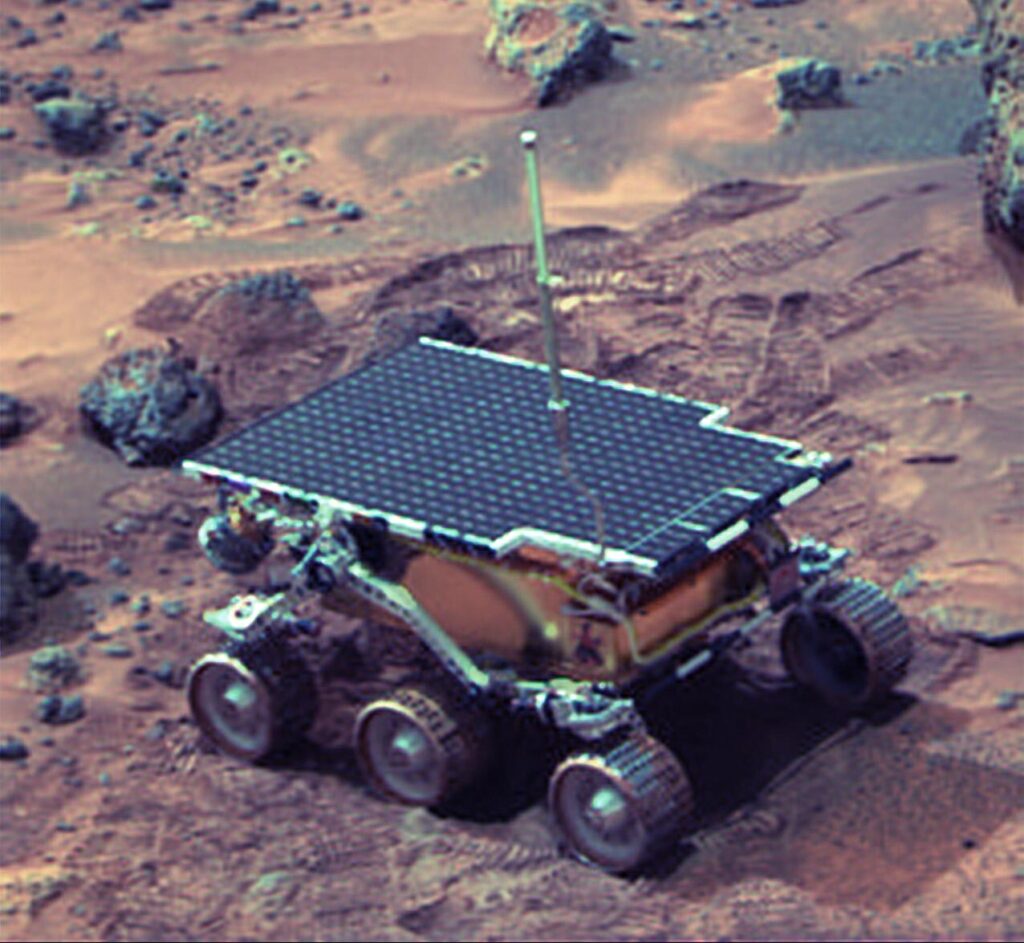
The first rover to land on Mars was the Sojourner rover, which was part of the Pathfinder mission in 1997. Sojourner was a small, six-wheeled rover that weighed about 25 pounds. It spent three months exploring the Martian surface and collecting data on the environment and geology.
Sojourner was followed by the Spirit and Opportunity rovers, which landed on Mars in 2004. Spirit and Opportunity were twin rovers that were much larger and more sophisticated than Sojourner. They were also equipped with a wider range of instruments, which allowed them to collect more detailed data on the Martian environment and geology.
Spirit and Opportunity both exceeded their mission objectives and operated for several years. Spirit became stuck in a sand dune in 2009, but Opportunity continued to operate until 2018.
In 2012, NASA launched the Curiosity rover, which is the largest and most sophisticated rover ever sent to Mars. Curiosity is still in operation today, and it has made significant discoveries about the Martian environment, geology, and potential for life.
In 2020, NASA launched the Perseverance rover, which is the most advanced rover ever sent to Mars. Perseverance is equipped with a wide range of instruments, including a drill that can collect samples from rocks and a helicopter that can scout the surrounding area. Perseverance is currently exploring the Jezero Crater, which is thought to have been an ancient lake.
Highlight key achievements of past missions
Past planetary exploration rovers have made many significant discoveries, including:
- The discovery of water ice on Mars
- The discovery of organic molecules on Mars
- The discovery of ancient riverbeds and lakes on Mars
- The discovery of evidence for a past Martian climate that was more hospitable to life
These discoveries have helped us to learn a great deal about the Moon and Mars, and they have made it clear that these planets are much more complex and dynamic than we once thought.
Planetary exploration rovers are a vital tool for understanding our place in the universe. They are helping us to learn about the history and evolution of other planets and moons, and they are searching for evidence of life beyond Earth.
Technology Behind Planetary Rovers
Mobility Systems
Planetary rovers use a variety of mobility systems to navigate the terrain on the planet or moon. The most common type of mobility system is wheels. Wheels are simple and robust, and they can be used to traverse a variety of terrain. However, wheels can get stuck in sand or soft soil, and they can also be damaged by rocks and other obstacles.
Another type of mobility system that is sometimes used on rovers is tracks. Tracks provide more traction than wheels, so they are less likely to get stuck in sand or soft soil. However, tracks are also more complex and expensive than wheels, and they can be damaged by rocks and other obstacles.
Suspension and locomotion mechanisms
In addition to wheels or tracks, rovers also need to have suspension and locomotion mechanisms. Suspension systems help to keep the rover upright and prevent it from getting stuck on obstacles. Locomotion mechanisms allow the rover to move forward, backward, and turn.
Some rovers have six wheels, while others have four wheels. Six-wheeled rovers are more stable and less likely to get stuck than four-wheeled rovers. However, four-wheeled rovers are more maneuverable.
Rovers also use a variety of locomotion mechanisms. Some rovers have motors that drive each wheel individually. This allows the rover to turn and move over uneven terrain. Other rovers have a single motor that drives all of the wheels. This is simpler and less expensive, but it makes the rover less maneuverable.
Power Generation
Planetary rovers need a source of power to operate their mobility systems, scientific instruments, and other components. The most common power sources for rovers are solar panels and nuclear generators.
Solar panels are relatively simple and inexpensive, but they are not very effective in low-light conditions, such as on Mars. Nuclear generators are much more efficient, but they are also more complex and expensive.
Energy storage and management
Rovers also need to have a way to store and manage their energy. This is important because rovers often operate in areas where there is little sunlight or other sources of power.
Rovers typically use batteries to store energy. Batteries are relatively heavy, but they are also the most efficient way to store energy. Rovers also have energy management systems that help to conserve energy and extend the rover’s mission life.
Communication Systems
Rovers communicate with Earth using radio signals. The signals are relayed through satellites in orbit around the planet or moon.
The communication system on a rover is typically made up of a radio transceiver and a high-gain antenna. The radio transceiver converts the rover’s digital data into radio signals. The high-gain antenna focuses the radio signals into a narrow beam, which allows the signals to be transmitted over long distances.
Delay in communication with Mars
Due to the distance between Earth and Mars, there is a significant delay in communication between the two planets. This delay can be up to 20 minutes each way.
The delay in communication with Mars can make it difficult to operate rovers. For example, if a rover encounters an obstacle, it may have to wait up to 20 minutes for instructions from Earth on how to proceed. This is why rovers are increasingly being equipped with autonomous navigation capabilities.
Scientific Instruments
Planetary rovers are equipped with a variety of scientific instruments to collect data on the environment, geology, and potential for life. The most common scientific instruments on rovers include:
- Cameras: Cameras are used to take images of the surrounding terrain and objects.
- Spectrometers: Spectrometers are used to analyze the chemical composition of rocks and other materials.
- Microscopes: Microscopes are used to examine rocks and other materials in close detail.
- Drills: Drills are used to collect samples from rocks and other materials for analysis.
Some rovers also have other scientific instruments, such as weather stations, seismic sensors, and magnetic field sensors.
Autonomous Navigation
Rovers are increasingly being equipped with autonomous navigation capabilities. This allows the rovers to navigate without the need for constant human input. This is important for future missions to distant planets and moons, where the communication delay between Earth and the rover is significant.
Autonomous navigation systems on rovers typically use a combination of sensors and algorithms to plan and execute routes. The sensors include cameras, inertial measurement units (IMUs), and odometry sensors. The algorithms use the data from the sensors to create a map of the surrounding terrain and to plan a route around obstacles.
Role of AI and machine learning
AI and machine learning are playing an increasingly important role in the development of autonomous navigation systems for planetary rovers. AI algorithms can be used to:
- Identify and avoid hazards: AI algorithms can be trained to identify hazards in the rover’s environment, such as rocks, craters, and cliffs. This allows the rover to avoid these hazards and navigate safely.
- Plan routes: AI algorithms can be used to plan routes for the rover around obstacles and to avoid areas that are deemed to be too dangerous.
- Adapt to changing conditions:AI algorithms can be used to adapt the rover’s navigation to changing conditions, such as changes in the terrain or weather.
AI and machine learning are also being used to develop new scientific instruments for planetary rovers. For example, AI-powered microscopes can be used to automatically identify and analyze microscopic features in rocks and other materials. This can help scientists to learn more about the geology and potential for life on other planets and moons.
Here are some instances of how AI and machine learning are being applied in planetary rovers today:
- The Perseverance rover is equipped with a system called AutoNav, which uses AI to autonomously navigate the Martian surface. AutoNav is able to identify and avoid hazards, plan routes, and adapt to changing conditions.
- The Curiosity rover is equipped with an AI-powered microscope called ChemCam. ChemCam can autonomously identify and analyze microscopic features in rocks and other materials. This has helped scientists to learn more about the geology and potential for life on Mars.
- The Rosalind Franklin rover, which is scheduled to launch to Mars in 2028, will be equipped with an AI-powered system called SHERLOC (Scanning Habitable Environments with Raman & Luminescence for Organics & Chemicals). SHERLOC will be used to search for evidence of past or present life on Mars.
AI and machine learning are transforming the way that we explore other planets and moons. By enabling rovers to navigate autonomously and to perform complex scientific tasks, AI and machine learning are helping us to learn more about our place in the universe.
ALSO READ : New AI algorithm can detect signs of life with 90% accuracy. Scientists want to send it to Mars
Case Studies
Lunar Rovers
1. Key lunar rover missions (e.g., Yutu-2)
The Yutu-2 rover is a Chinese lunar rover that was launched to the Moon in 2018. It is the first rover to land on the far side of the Moon. Yutu-2 is equipped with a variety of scientific instruments, including cameras, spectrometers, and a ground-penetrating radar.
Yutu-2 has made a number of significant discoveries, including:
- The discovery of a new type of lunar rock
- The discovery of evidence of water ice in the lunar poles
- The discovery of evidence of ancient volcanic activity on the Moon
Yutu-2 is still in operation today, and it continues to explore the far side of the Moon.
2. Technological advancements and discoveries
Lunar rovers have come a long way since the Apollo Lunar Roving Vehicle (LRV) was used on the Moon in the 1970s. Today’s lunar rovers are much more sophisticated and capable.
Some of the key technological advancements in lunar rovers include:
- Autonomous navigation: Lunar rovers are now equipped with autonomous navigation capabilities, which allows them to navigate without the need for constant human input. This is important for future missions to distant planets and moons, where the communication delay between Earth and the rover is significant.
- AI-powered instruments: Lunar rovers are also being equipped with AI-powered instruments. These instruments can automatically identify and analyze features in rocks and other materials. This helps scientists to learn more about the geology and potential for life on other planets and moons.
Martian Rovers
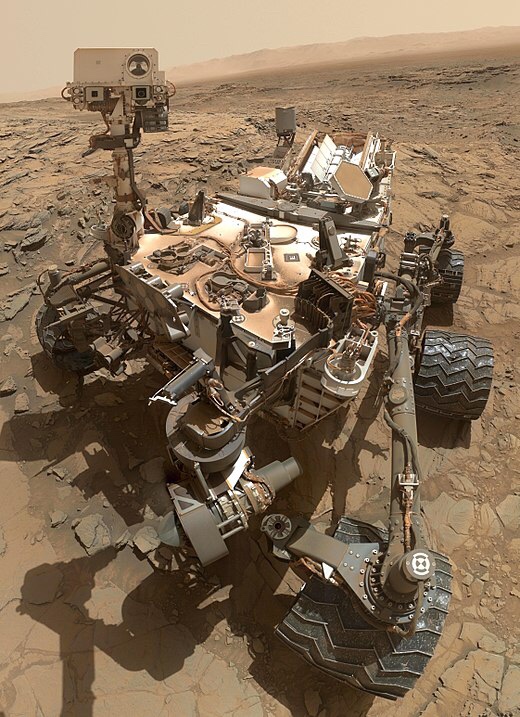
1. Explore Mars rovers (e.g., Curiosity, Perseverance)
The Curiosity rover landed on Mars in 2012. It is the largest and most sophisticated rover ever sent to Mars. Curiosity is equipped with a variety of scientific instruments, including cameras, spectrometers, and a drill.
Curiosity has made a number of significant discoveries, including:
- The discovery of evidence of an ancient Martian lake
- The discovery of organic molecules in Martian rocks
- The discovery of evidence of a past Martian climate that was more hospitable to life
The Perseverance rover landed on Mars in 2020. It is the most advanced rover ever sent to Mars. Perseverance is equipped with a variety of scientific instruments, including cameras, spectrometers, a drill, and a helicopter.
Perseverance is currently exploring the Jezero Crater, which is thought to have been an ancient lake. It is searching for evidence of past or present life on Mars.
2. Scientific findings and achievements
Martian rovers have made a number of significant scientific discoveries, including:
- The discovery of water ice on Mars
- The discovery of organic molecules on Mars
- The discovery of evidence of an ancient Martian climate that was more hospitable to life
These discoveries have helped us to learn a great deal about Mars and its potential for life.
Statistical Insights
Here are some relevant statistics about planetary rovers:
| Rover | Dimensions (m) | Mass (kg) | Cost (USD billions) | Mission duration (years) |
|---|---|---|---|---|
| Apollo Lunar Roving Vehicle (LRV) | 3.1 x 2.3 x 1.1 | 210 | 1.9 | 0.2 |
| Yutu-2 | 1.9 x 1.3 x 1.1 | 140 | 0.2 | 1+ |
| Curiosity | 3.0 x 2.8 x 2.1 | 900 | 2.5 | 10+ |
| Perseverance | 3.0 x 2.8 x 2.1 | 1025 | 2.7 | 1+ |
As you can see, planetary rovers have become larger, more sophisticated, and more expensive over time. This is because we are sending rovers to more challenging environments, and we are asking them to perform more complex tasks.
Planetary rovers are a vital tool for exploring other planets and moons. They have helped us to learn a great deal about the Moon, Mars, and other celestial bodies. As technology continues to advance, planetary rovers will play an even more important role in our exploration of the solar system and beyond.
Challenges and Future Prospects
Discuss challenges faced by planetary rovers
Planetary rovers face a number of challenges, including:
- Harsh environments: Planetary rovers must operate in harsh environments, such as the extreme cold and dust storms of Mars.
- Limited power and resources:Planetary rovers are limited by their power and resources. They must carefully manage their power and resources in order to complete their missions.
- Distance from Earth: Planetary rovers are millions of miles away from Earth. This makes it difficult to communicate with and control the rovers.
- Autonomous navigation:Planetary rovers must be able to navigate autonomously, without the need for constant human input. This is important for future missions to distant planets and moons, where the communication delay between Earth and the rover is significant.
Future missions and technologies (e.g., Mars Sample Return)
There are a number of future missions and technologies that are being developed to address the challenges faced by planetary rovers. These include:
- Mars Sample Return: The Mars Sample Return mission is a joint mission between NASA and the European Space Agency (ESA) to return samples of Mars to Earth. The mission is scheduled to launch in 2027 and return samples to Earth in 2033. The Mars Sample Return mission will be the first mission to return samples from another planet.
- Nuclear power: Nuclear power is a promising technology for powering future planetary rovers. Nuclear power would provide rovers with a virtually unlimited source of power, which would allow them to explore more remote and challenging environments.
- AI and machine learning: AI and machine learning are being used to develop new technologies for planetary rovers, such as autonomous navigation and AI-powered instruments. These technologies will help rovers to explore more safely and efficiently.
The role of international collaboration in space exploration
International collaboration plays an important role in space exploration. By working together, different countries can share resources and expertise. This allows them to develop and launch more ambitious missions than they could on their own.
Some examples of international collaboration in space exploration include:
- The International Space Station (ISS): The ISS is a joint project between NASA, the Russian space agency Roscosmos, the Canadian Space Agency, the European Space Agency, and the Japan Aerospace Exploration Agency (JAXA). The ISS has been in operation since 1998 and has been used to conduct a wide range of scientific experiments.
- The Mars Sample Return mission: The Mars Sample Return mission is a joint project between NASA and ESA. The mission will return samples of Mars to Earth for analysis by scientists around the world.
- The Artemis program: The Artemis program is a NASA-led program to return humans to the Moon and to establish a sustainable presence on the Moon. The Artemis program includes international partners such as Canada, Japan, and the European Space Agency.
International collaboration in space exploration is essential for expanding our knowledge of the universe and for developing new technologies that benefit all of humanity.
Conclusion
Summarize the advancements in planetary exploration through rovers
Planetary rovers have played a vital role in our exploration of the Moon, Mars, and other celestial bodies. Rovers have helped us to learn a great deal about the geology, environment, and potential for life on other planets and moons.
Some of the key advancements in planetary exploration through rovers include:
- Autonomous navigation:Rovers are now equipped with autonomous navigation capabilities, which allows them to navigate without the need for constant human input. This is important for future missions to distant planets and moons, where the communication delay between Earth and the rover is significant.
- AI-powered instruments:Rovers are also being equipped with AI-powered instruments. These instruments can automatically identify and analyze features in rocks and other materials. This helps scientists to learn more about the geology and potential for life on other planets and moons.
- New technologies: New technologies are being developed to address the challenges faced by planetary rovers, such as nuclear power and AI-powered rover systems. These technologies will help rovers to explore more safely and efficiently.
Emphasize the ongoing and future importance of rover missions
Rover missions will continue to play an important role in our exploration of the solar system and beyond. Rovers are essential for exploring planets and moons that are too hostile or remote for humans to visit.
Some of the key goals of future rover missions include:
- Searching for evidence of past or present life on Mars
- Exploring the moons of Jupiter and Saturn
- Exploring the icy worlds of the outer solar system
Rover missions will help us to answer some of the most fundamental questions about our place in the universe, such as whether or not life exists beyond Earth.
Planetary rovers are a vital tool for exploring other planets and moons. Rovers have helped us to learn a great deal about the Moon, Mars, and other celestial bodies, and they will continue to play an important role in our exploration of the solar system and beyond.
